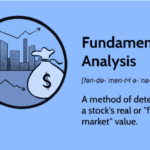How Interest Rates Affect Forex Markets
Interest rates are one of the most significant factors influencing the foreign exchange (forex) markets. Traders, investors, and central banks closely monitor interest rate decisions as they can drive currency valuations and create volatility. Understanding the relationship between interest rates and forex markets is crucial for anyone involved in currency trading.
The Role of Interest Rates in Forex
Interest rates are set by central banks, such as the Federal Reserve (Fed) in the U.S., the European Central Bank (ECB), or the Bank of England (BoE). These rates determine the cost of borrowing and the return on savings, influencing economic activity and investment flows. In forex markets, interest rates primarily impact currency values through two key mechanisms:
- Attracting Foreign Investment: Higher interest rates offer better returns on savings and fixed-income investments, attracting foreign capital. As investors buy assets denominated in a higher-yielding currency, demand for that currency increases, leading to appreciation.
- Influencing Carry Trades: The carry trade is a popular forex strategy where traders borrow in a low-interest-rate currency and invest in a higher-yielding one. When interest rate differentials widen, carry trades become more attractive, increasing demand for high-yielding currencies.
Interest Rate Differentials and Currency Strength
Currency pairs are influenced by the relative interest rates of two economies. When a country raises interest rates while another maintains or lowers them, the currency with the higher rate tends to strengthen against the lower-yielding currency. For example, if the U.S. Federal Reserve raises rates while the European Central Bank keeps them unchanged, the U.S. dollar is likely to appreciate against the euro.
Conversely, when a central bank cuts rates, its currency often weakens. Lower rates reduce the incentive for investors to hold assets in that currency, leading to capital outflows and depreciation.
Market Expectations and Interest Rate Decisions
Forex markets react not only to actual interest rate changes but also to expectations of future changes. Traders analyze central bank statements, economic data, and inflation trends to anticipate potential rate hikes or cuts. If a central bank signals a more aggressive rate hike than expected, its currency may strengthen even before the official rate increase occurs.
For example, when the U.S. Federal Reserve hints at future rate hikes due to rising inflation, traders may start buying U.S. dollars in anticipation, pushing the currency higher in advance of the actual rate move.
Global Interest Rate Trends and Forex Volatility
Interest rate changes can trigger significant volatility in forex markets. Sudden shifts in monetary policy, unexpected rate hikes or cuts, and divergent policies between major economies can lead to rapid currency fluctuations. This volatility presents both opportunities and risks for forex traders.
For instance, if the Bank of Japan maintains ultra-low interest rates while the U.S. Fed raises rates aggressively, the Japanese yen may weaken significantly against the U.S. dollar, creating trends that traders can capitalize on.
Conclusion
Interest rates are a crucial driver of forex market movements. They influence currency strength, attract investment, and impact trading strategies like carry trades. Forex traders must stay informed about central bank policies, economic data, and market expectations to navigate interest rate-driven fluctuations successfully. By understanding how interest rates shape currency markets and forex markets, traders can make more informed decisions and improve their trading strategies.



